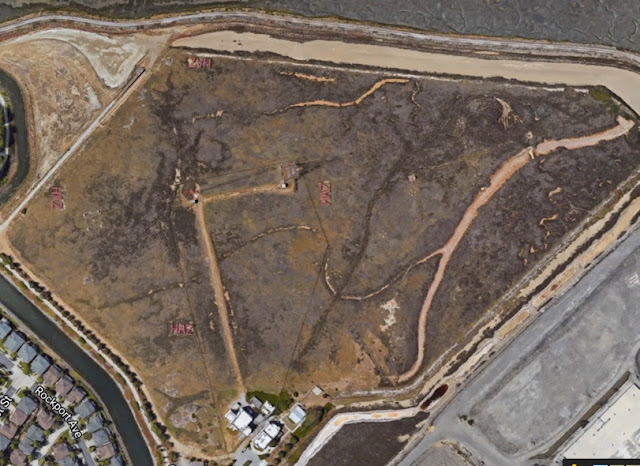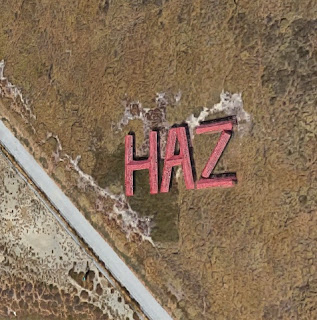… but often we don’t think to ask “Hey.. what is that thing?” And it’s corresponding Challenge: “How can I find out about this??”
One of my secret missions with SRS is to help all of us develop a working sense of curiosity… and more than that, to figure out ways to satisfy that curious twinge.
This is one such story.
As I mentioned last week, I see this very strange antenna every time I fly into San Francisco airport. This antenna is at 37.5469956,-122.2338807. The big question I have every time is what is this thing??
Here’s an aerial view:
It’s a little hard to see in this image, but it’s an strange beast of an antenna, with a large plate-like thing at the top of the mast. Here’s the side view:
Can you see the hexagonal thing at the very top? (Click on the image to zoom in. Or if you want to, download the image and you can zoom as much as you’d like.)
At the fence I also found this, in case it helps:
This is one of those everyday mysteries–things you see all the time without understanding what it is. But that’s NOT what SRS is about! When we see mysteries, we try to understand what’s happening. So.. .
Can you figure out the story here? In particular:
1. What IS the story behind this antenna? (A bit of history, please.)
Searching for the antenna numbers:
2. Why does it have that funny plate plate at the top?
We know part of the answer to this from our previous searches. But doing a bit of background checking, the search:
3. Who uses this antenna now, and for what purpose?
“KNBR is an AM radio station licensed to San Francisco, broadcasting on a clear channel at 680 kHz from transmitting facilities near Belmont, California. KNBR’s non-directional 50,000-watt class-A signal can be heard throughout much of the western United States and as far west as the Hawaiian Islands at night. For several decades, KNBR enjoyed a long history as the flagship station of NBC’s West Coast radio operations.”
“KNBR carried programs from ESPN Radio and KTCT aired shows from both ESPN Radio and Fox Sports Radio until 2013, when both stations switched to the Cumulus-distributed CBS Sports Radio.
In 2015, KNBR’s studios were relocated from 55 Hawthorne Street to 750 Battery Street after parent Cumulus Media consolidated its San Francisco radio stations in one building.”









